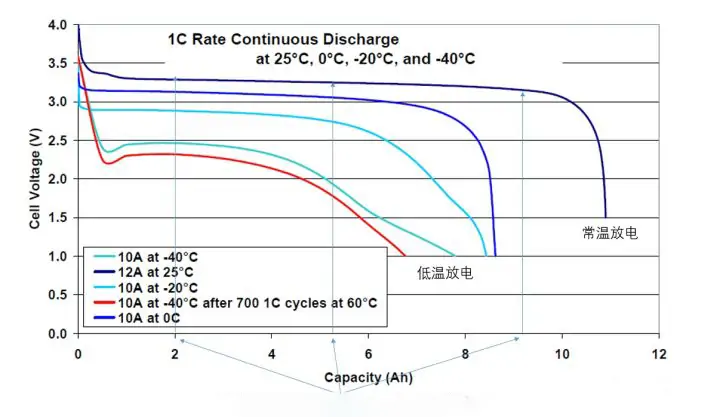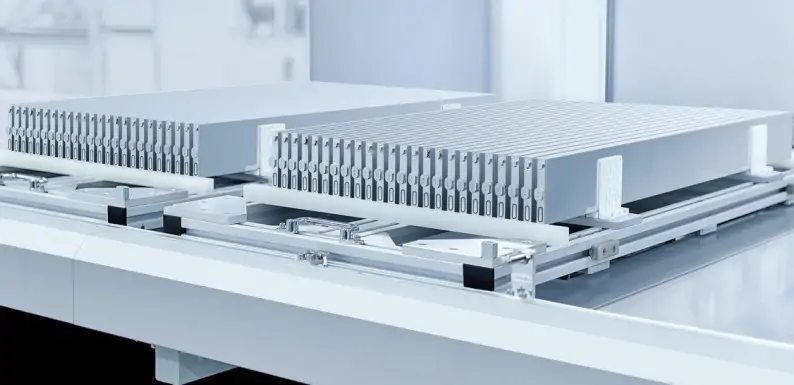 |
Welcome To Evlithium Best Store For Lithium Iron Phosphate (LiFePO4) Battery |
 |
LiFePO4 batteries, also known as lithium iron phosphate batteries, have gained popularity for their high energy density, extended lifespan, and enhanced safety features. However, to ensure the optimal performance and longevity of LiFePO4 batteries, it is crucial to understand and manage their temperature range effectively. In this article, we delve into the concept of LiFePO4 battery temperature range, exploring its significance and impact on battery performance.

Temperature range refers to the specific temperature boundaries within which a LiFePO4 battery operates optimally. As temperature greatly influences the electrochemical reactions within the battery, it plays a pivotal role in determining its performance and overall lifespan. Therefore, having a comprehensive understanding of the temperature range is essential for maximizing the benefits of LiFePO4 batteries.
LiFePO4 batteries exhibit an ideal operating temperature range that ensures their optimal performance and longevity. This range encompasses both low and high temperature thresholds. Deviating from this range can have adverse effects on battery capacity, efficiency, and even safety.
The recommended low-temperature threshold for LiFePO4 batteries typically ranges between -20ˇăC and -10ˇăC. Operating the battery below this threshold leads to decreased capacity and slower discharge rates. In extremely cold conditions, the battery may even experience reduced functionality.
On the other hand, the high-temperature threshold for LiFePO4 batteries typically falls between 45ˇăC and 60ˇăC. Operating the battery beyond this threshold can result in accelerated self-discharge rates, reduced capacity, and increased risk of safety hazards such as thermal runaway.
Cold temperatures can significantly impact the performance of LiFePO4 batteries. When exposed to low temperatures, the battery's capacity decreases, leading to reduced energy output. Additionally, the discharge rates become slower, affecting the overall efficiency of the battery. To mitigate these effects, several precautionary measures can be taken.

Insulation and thermal management play a crucial role in preserving battery performance in cold weather. Insulating the battery or incorporating thermal management systems helps maintain a stable temperature and prevent excessive cooling. Additionally, battery heating solutions can be employed to raise the internal temperature and optimize performance in cold environments.
Similar to cold temperatures, high temperatures can have detrimental effects on LiFePO4 batteries. Elevated temperatures accelerate self-discharge rates, leading to reduced capacity and energy storage efficiency. Exposure to direct sunlight or excessive heat can exacerbate these effects. Effective measures should be implemented to address these challenges.
Heat dissipation and cooling techniques are essential for managing LiFePO4 batteries in hot weather conditions. Ensuring proper ventilation, heat sinks, or even active cooling systems can help dissipate heat and maintain a suitable operating temperature. Shielding the battery from direct sunlight exposure is also crucial to prevent overheating and preserve performance.
Operating LiFePO4 batteries in extreme temperatures, either too cold or too hot, can have severe consequences. Extreme cold can lead to irreversible damage to battery components and a heightened risk of thermal runaway. Extreme heat, on the other hand, can accelerate degradation processes, reducing battery lifespan and compromising safety. To counter these risks, it is essential to employ suitable mitigation strategies.
Temperature regulation systems are particularly effective in managing LiFePO4 batteries in extreme temperature conditions. These systems monitor and control the battery temperature, ensuring it remains within the recommended range. Additionally, incorporating thermal monitoring and protection mechanisms provides an added layer of safety, preventing potential hazards.
To ensure optimal performance and longevity, maintaining the recommended temperature range for LiFePO4 batteries is crucial. Consistently operating the batteries within this range helps preserve capacity, efficiency, and overall battery health. Adhering to best practices for temperature management is paramount in achieving these goals.
Proper storage guidelines should be followed to maintain LiFePO4 batteries when not in use. Storing batteries in a controlled environment, within the recommended temperature range, helps prevent degradation and extends their lifespan. During operation, continuous temperature monitoring and control are vital to mitigate any temperature-related issues promptly.
Different applications may have unique temperature considerations for LiFePO4 batteries. For instance, in electric vehicles (EVs), temperature plays a significant role in battery range and performance. Implementing efficient thermal management systems within EVs helps regulate battery temperature, optimizing range and overall vehicle performance.
In renewable energy storage, such as solar and wind applications, temperature also affects energy storage efficiency. Ensuring proper climate considerations, such as proper ventilation and insulation, helps maintain the desired temperature range for optimal energy storage and retrieval.
Edit by editor
All Rights reserved © 2025 Evlithium Limited